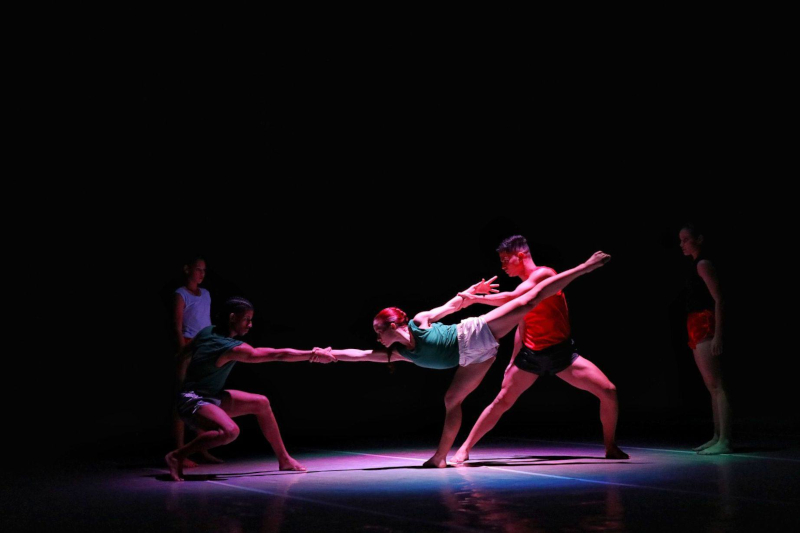CAMAGÜEY. — After several weeks of work at its headquarters, the Camagüey Contemporary Ballet premiered the piece Voces (Voices) on October 24th at the Avellaneda Theater, choreographed by Danish artist Jens Bjerregaard.
Outside, the wind felt different: the province had just been placed on an informative phase due to the threat of the potential hurricane Melissa. Inside, the theater showed scattered seats and a reduced but loyal audience. Still, the stage insisted on its purpose — to keep dance alive, even when uncertainty looms.
The text accompanying the work refers to the abstract images of childhood dreams, when the body seems to levitate and the mind plays and creates sounds. Yet Voces is less a narrative than an atmosphere — a space where logic dissolves and movement translates sensation. What may sound rhetorical on paper becomes onstage a kind of lightness, an inner rhythm breathing through pauses and encounters.
Only five dancers took the stage — two men and three women — although seven had been announced. Among them was María Karla Quiles, a third-year student from the Luis Casas Romero Professional School of Art, a living link between artistic education and the professional company. Her presence, alongside seasoned performers, underscores a constant feature in Bjerregaard’s work: the search for thinking bodies, those that respond to concepts rather than mere virtuosity.
From By Friction to Cuerpos de Agua (Bodies of Water), the Danish choreographer has woven with the Contemporary Ballet of Camagüey a recognizable aesthetic line: abstraction, organic movement, formal precision, and a restrained, almost glacial emotional tone. Voces continues along that path, though it feels more playful — more open to the fragility of gesture. The piece tells no story; instead, it offers a flow of suspended images where bodies seem to seek, touch, and float between dim or vivid lights and silences interrupted by brief bursts of movement.
In that play between weight and lightness, order and chance, Bjerregaard builds an atmosphere that appeals not to drama, but to a state of being. Not everything works: some passages fade in repetition or feel disconnected from the ensemble’s inner pulse. Yet there are moments when synchrony, spatial balance, and serenity in motion achieve a shared breathing — a listening to those inner voices the title evokes.
The program also featured Estaciones Pasadas (Past Seasons), a solo performed by the choreographer himself — a mature man bringing to the stage the memory of his dancer’s body. It is no longer the virtuosity of before, but a physical testimony: movement as memory, as a trace that refuses to disappear. In that personal, almost intimate act, lies the evening’s deepest truth.
Freedom, by Lisandra Gómez de la Torre and Jesús Arias Pagés, provided the counterpoint: the company portraying itself, celebrating 23 years of artistic work, and bringing for the first time to the main stage a piece previously performed only at its studio. It was the necessary gesture to balance the evening between the foreign gaze that abstracts and the local voice that affirms.
Between the weather alert and the act of creation, the premiere carried a kind of metaphor: a city in suspense, an almost empty theater, and a group translating childhood voices into motion. Dancing in the informative phase — dance as a refuge before much rain and strong winds.
Translated by Linet Acuña Quilez

